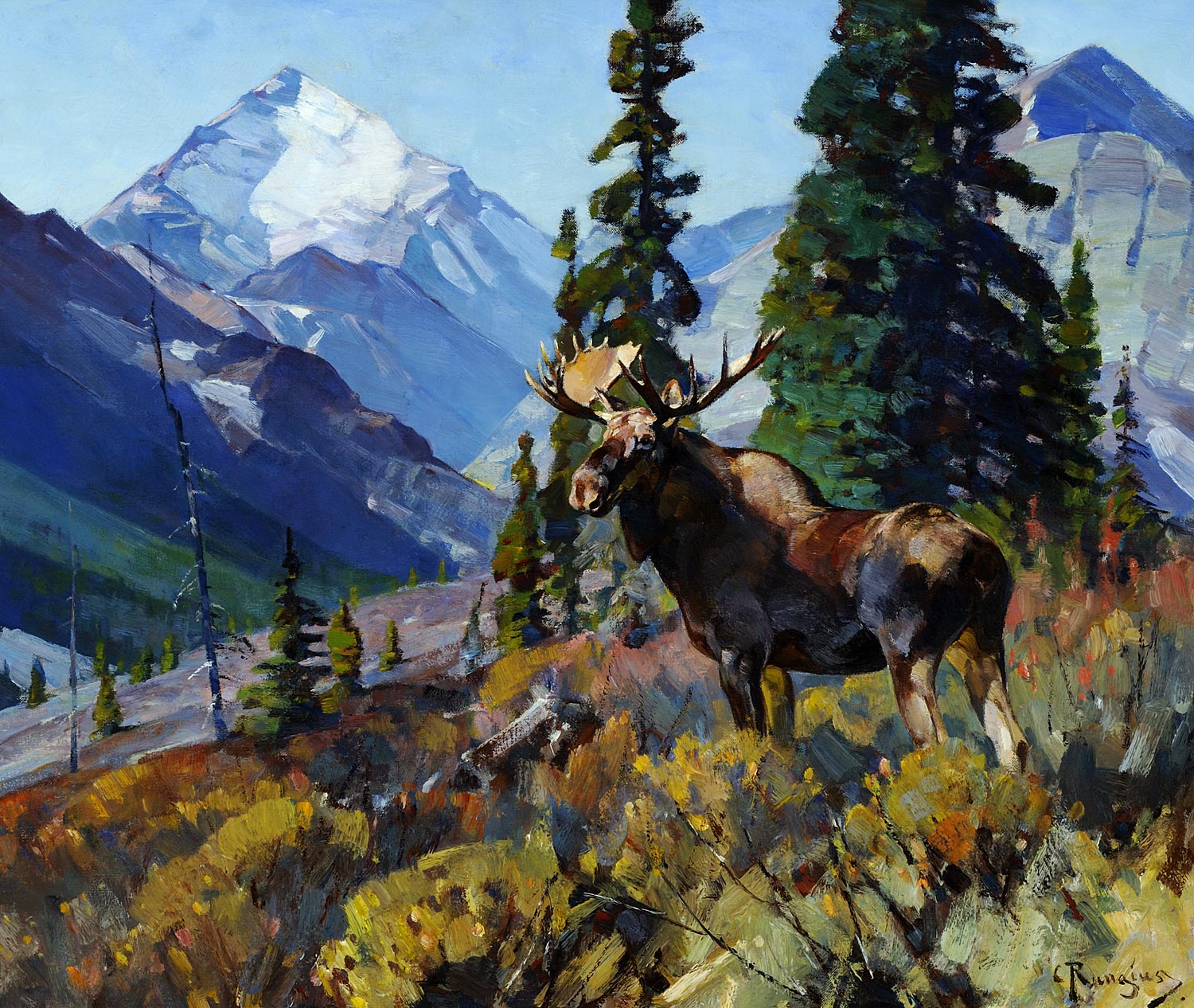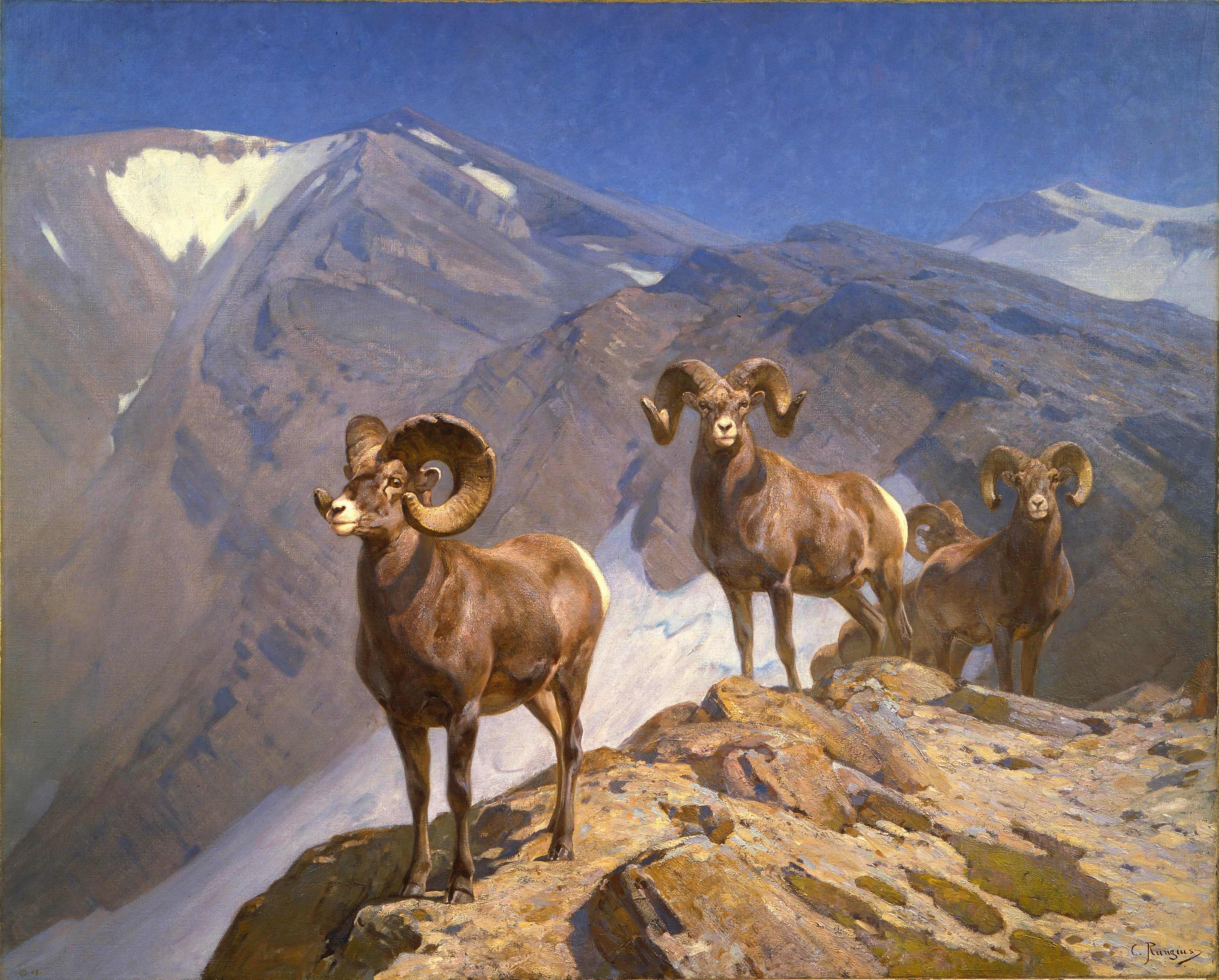Carl Clemens Moritz Rungius was a leading American wildlife artist. He was born in Germany though he immigrated to the United States and he spent his career painting in the western United States and Canada. Active primarily in the first half of the 20th century, he earned a reputation as the most important big game painter and the first career wildlife artist in North America.
In 1894, Rungius's Uncle - Clemens Fulda invited him to hunt moose in Maine. Shortly after, in 1895, he traveled to Wyoming, which for him was an exotic experience. Open skies, mountain scenes and big game abounded. He made extensive studies of his trophies, and stalked game, which allowed him to gain a better understanding of the animals he painted. His summer in Wyoming persuaded Rugius that the United States would be his new home; “I painted from the collected material and later in the spring of 1896, I went back to Germany... My decision to cut all ties with the Old World and to live in America for good was due in no small part to this first Wyoming trip. For my heart was in the West.”
Rungius was an avid sportsman, and spent more time in the wilderness than other artists. By direct observation of nature, he was able to gain exceptional insight into the animals and their environment. The artist painted both landscapes and wildlife, often with both in a single picture. He placed animals in their natural environment, a practice that was new to painting in early twentieth century North America. His paintings are highly romanticized, and represent an Eden-like world without any signs of a human impact.


 Carl Rungius
Carl Rungius